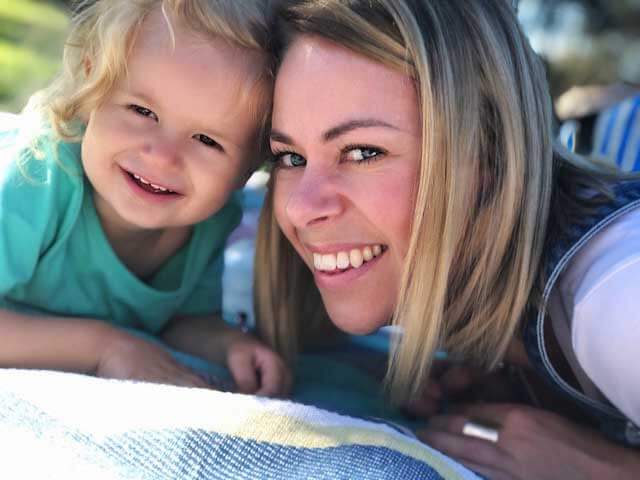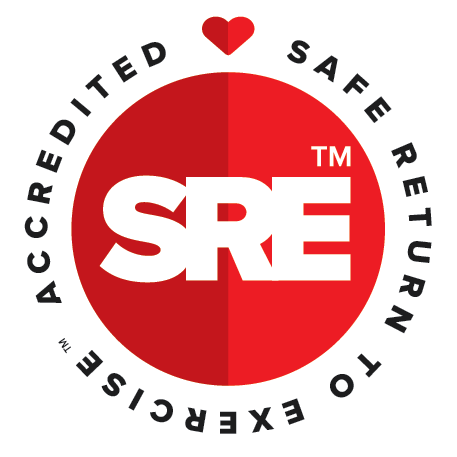Living with Pelvic Organ Prolapse – The ups and the downs (literally)

“Your prolapse is not as bad today”, observed the Women’s Health Physio as she was fitting me with a pessary, and she was right. Having a baby and suffering a bladder & uterine prolapse has certainly made me more in tune with my body. It’s been a journey to get to this point, not all sunshine and rainbows, yet fast forward two years and I now know what my body is capable of. Sometimes I don’t think we give ourselves enough credit for cooking and delivering a little human.
One of the first things we can do is understand what a prolapse is. By having an awareness, not only prepares you mentally for what could happen, you can also take the recommended steps to try and prevent one. A pelvic organ prolapse is when one or more organs bulge into the wall of the vagina, caused by childbirth (or in my case, doing too much exercise too soon postnatally, not giving myself time to heal) and having a family history of it can also increase the risk. I was unaware of both causes, having a presumption it only happened to women when they were older. If only I knew.
What I do know though, is that you can still live a great life, learning to manage the symptoms via some simple lifestyle changes, without thinking surgery is your only answer. It can present differently throughout the month, giving an indication it is improving, then gets worse again. This can be very upsetting and frustrating, sending you in a downwards spiral if you let it. I found writing a journal helped with this; expressing my emotions let me release how I was feeling. Then the reality of my symptoms on that day, assisted me in learning that there was, in fact a pattern every month, in line with my menstrual cycle.
Know the signs.
I wasn’t sure of the signs to look out for after having my baby girl and even when I faced the fact that something wasn’t quite right, I refused to accept it. As emotionally challenging this was at the time, feeling like my body was broken, I knew I had to act, especially when the symptoms kept reoccurring. I just remember thinking, “I can’t carry on like this”.
Some of the red flags to be aware of are a heaviness or dragging sensation of the pelvic region (this is expected late pregnancy/early postpartum) although if this doesn’t go away, could indicate something more. Another sign is urge/stress incontinence (when you need to wee all the time or leak when you sneeze/jump). Sometimes we accept this as being normal after childbirth and even though it is common, is not normal. Additionally, there may be the inability to orgasm, or pain during intercourse.
Learning to manage POP
Exercise & Education
One of the things I feared was exercising, frightened I might make it worse. Everyday activities like shopping, cleaning, picking up the pram would make me fearful. Since then I have learnt that exercising in a safe way is a good thing; keeping my body moving and staying active will only make me fitter and stronger. Learning how to lift safely with the correct techniques. Resulting in a body that can manage a prolapse, opposed to living a sedentary lifestyle with much more health risks.
Pelvic Floor & Inner Core
Seeing a Women’s Health Physio regularly keeps an eye on things where no one else can see. After my initial appointments and learning how to do pelvic floor exercises correctly I am reducing the risk of prolapse worsening, (and fingers crossed improving it!). Along with checking my pessary (a device that is inserted to hold everything up). All I look for now in my routine check-ups is some validation and reassurance. “Rach, everything is the same, keep on going”. This is all I need.
Straining and Constipation
I have been known to enjoy reading a book on the toilet. Well not so much anymore! I now avoid long periods of time sitting or straining and ensure my posture is positioned to assist the process. Restricting caffeine has proven to help my incontinence, as well as a cranberry supplement daily. Following a healthy diet also assists in good bladder & bowel habits.
Sex & Rock & Roll
Having a lack of sensation, fearing what could happen and having little confidence, can make you lose the desire to have sex. Openly discussing your concerns with your partner can help, although physical attraction does play a part, I find by having the conversation I am able to connect more, leading on to a certain level of care and intimacy that may not have been reached before. Of course, an erotic book before bed may help too.
50 % of women have a prolapse after a vaginal delivery. Prolapse or no prolapse, know that it is ok to talk about it; Mama, you are beautiful inside and out.
Rachel runs specialised mums and bubs sessions in Carindale, Brisbane, QLD - please see her profile page for more information and to get in touch.
Rachel Smith runs Rachel Smith in Queensland, . Learn more about Rachel and Book your Trial today.
Comments Off on Living with Pelvic Organ Prolapse – The ups and the downs (literally)
